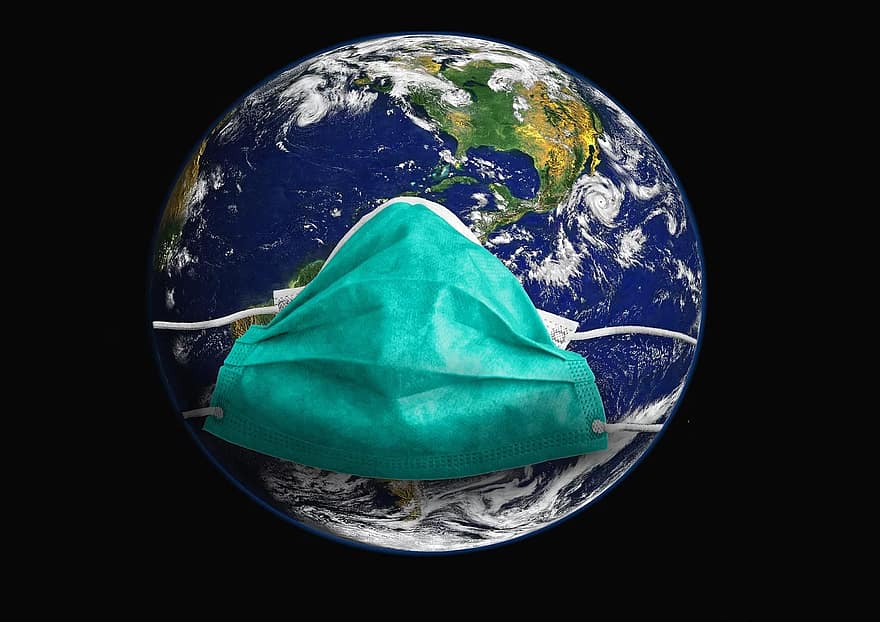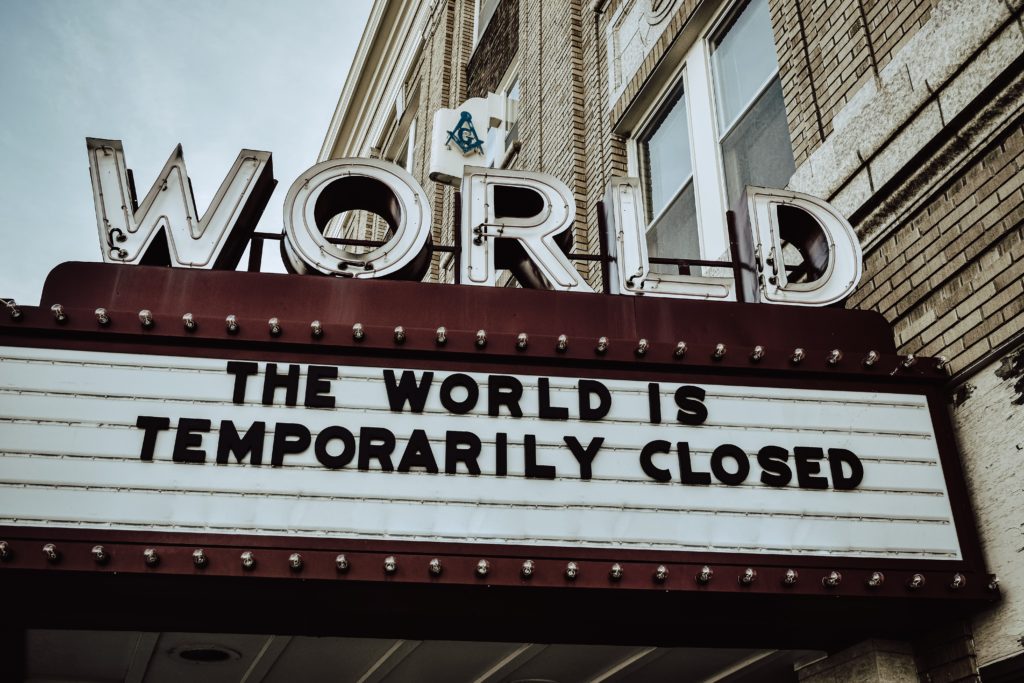In Summary:
- The Michigan Supreme Court recently ruled against the legal basis for numerous executive orders issued by the Governor during the novel coronavirus pandemic.
- State and local health departments are given powers by the state public health code to issue orders necessary to protect the public.
- Following orders from local health officers and the director of the state health department, Michigan residents should continue to limit gathering sizes and wear face coverings in public spaces.
COVID-19 cases and hospitalizations are trending upwards as Michigan enters months of colder weather, and yet mixed-signals surrounding the severity of the threat (and the appropriate public response thereto) continue to put Michigan at risk. Since the virus isn’t going anywhere, it’s certainly true that we all need to learn to live with it. Of course, living with the virus means following public health guidance to wear masks and limit gathering sizes, empowering those in charge of contact tracing and quarantine measures to break the chains of viral transmission, and fostering transparency and shared public trust in efforts to develop vaccines and other pharmacological interventions.
In April, when some believed the scourge of COVID-19 would be confined to Metropolitan Detroit, we cautioned that all of Michigan remained at risk from the disease. We also cautioned that rural communities in Michigan faced elevated risk from the disease, given its older population, higher rates of tobacco use, and limited health care infrastructure. Factors like poverty, low educational attainment, and the related prevalence of chronic diseases and disability, common social vulnerabilities in both rural parts of the state and urban places like Detroit, affect susceptibility to diseases like COVID-19. Just as we anticipated, COVID-19 has been hitting rural areas later, and often harder.
While some nations have had greater success tracing and controlling the spread of the novel coronavirus, the virus remains an ongoing threat around the globe and throughout the United States, including in our great state of Michigan.

The Status of Emergency Orders in Michigan
Upon this backdrop of an ongoing global pandemic, a decision by the Michigan Supreme Court has overturned the legal basis for numerous emergency executive orders issued by Michigan’s Governor throughout the course of the pandemic. And yet, while some have suggested that Michigan residents should now go out and burn their masks, that advice may be both hasty and inadvisable.
Public health emergency orders mandating face coverings and limiting the size of gatherings have been issued by the Michigan Department of Health and Human Services (MDHHS). These orders are not impacted by the recent Supreme Court decision regarding the Governor’s emergency powers. State and local health departments are empowered to issue such public health orders that are enforceable both civilly and criminally.
The Michigan Public Health Code states that:
If the director determines that control of an epidemic is necessary to protect the public health, the director by emergency order may prohibit the gathering of people for any purpose and may establish procedures to be followed during the epidemic to insure continuation of essential public health services and enforcement of health laws. Emergency procedures shall not be limited to this code.
As our past research has outlined, essential public health services include the responsibility of health departments to “create, champion, and implement policies, plans, and laws that impact health” and to “utilize legal and regulatory actions designed to improve and protect the public’s health.”
MDHHS’ order to limit gathering sizes and to mandate that individuals wear masks in public is certainly fulfillment of these essential public health services.

The Long History of Public Health Orders
Despite politicization of the issue, masks are a safe, evidence-based, low-cost, and effective way to reduce transmission of the novel coronavirus that causes the disease COVID-19. Nonetheless, some may still contend that forcing individuals to wear masks through either statutory law or administrative regulations inappropriately discounts personal responsibility, or even that such mandates represent a violation to individual liberties.
Arguments such as these, while important to consider, are problematic for a couple key reasons.
Firstly, state governments, supported by centuries of legal precedent, have the authority (and responsibility) to address public health threats (e.g., the spread of infectious diseases) through a variety of policies, including restrictions on individual and business activities. Derived from firmly established English common law principles that mandated the limitation of private rights when necessary for preservation of the common good, the “police power” of government was adopted early in Colonial America.
Police power, in this context, doesn’t necessarily mean criminal enforcement, but rather the authority of communities to enforce civil self-protection rules (including everything from speed limits and impaired driving laws to bans on indoor tobacco use or indecent exposure). Shortly after the end of the Revolutionary War, this police power was exercised when the city of Philadelphia utilized isolation and quarantine during the yellow fever epidemic of 1793.
Public health police power has long allowed state and local governments to isolate and/or quarantine people, carry out health/safety inspections, and engage in numerous other activities necessary to prevent illness, injury, or various potentially harmful exposures. This responsibility of government to preserve the common good in matters of public health continues today; by June of this year, all 50 states had issued emergency declarations in response to COVID-19.
Secondly, the view that health is solely an individual concern (confined to individual choices and/or an individual relationship between a healthcare provider and patient) is in conflict with decades (if not centuries) of research and evidence.
The field of medicine focuses on the treatment of illness and/or injury in the individual, but the field of public health has always focused on health at the community/population level. While individuals certainly play a role in their own health, many of the strongest influences on health (such as physical and social environments, legal, political, and economic structures, and, indeed, the choices/behaviors of others) fall outside any one individual’s ability to control. Public health, which considers health at the macro level, is essential for the health of both communities and individuals.

The Path Forward
The cultural fixation on individuals/medicine over communities/public health is one of the primary reasons that the U.S. spends substantially more on health care than other nations, and yet often still achieves worse health outcomes.
When the coronavirus pandemic began, many policymakers and journalists jumped right to the question of healthcare capacity—do we have enough hospital beds for the number of patients we expect to be severely ill—and never stopped to consider the importance of public health capacity.
The first questions asked should instead have been:
Do we have adequate public health personnel and capacity to perform surveillance, contact tracing, and other activities to stop or slow the spread of the pathogen? Do we have public capacity to quickly screen and test individuals? Do we have people ready to provide accurate information to the public about how to stay safe and help others do the same?
In other words: Do we have the public health infrastructure to prevent people from becoming sick and needing a hospital bed?
As our research warned in 2018, the answer was no.
While constitutional questions determining the balance and separation of powers within state government are undoubtedly important, especially in the context of ambiguous or conflicting laws, there is little ambiguity regarding the need to address the ongoing threat of COVID-19 to prevent further physical, social, and economic damage to people and communities throughout Michigan.
Public health officials have a clear responsibility to follow the evidence and use all the tools at their disposal to fulfill the essential roles of public health. Because the work of public health often requires community-level activities, we would all benefit from a clearer understanding of public health by the general public and greater support of public health methods and principles by those in positions of leadership.
As we move forward into the colder months and the coronavirus comes together with the start of flu season, ongoing vigilance and adherence to evidence-based public health guidelines are as important as ever. If we’re going to live with the virus, we need to start doing a better job of working together to minimize its transmission.

